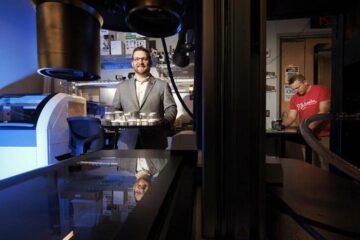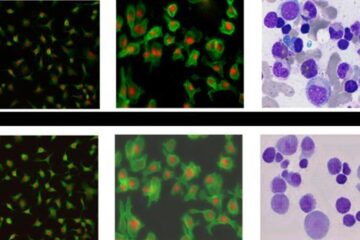Immune system may guide chemotherapy for breast cancer

Researchers at the University of California, San Francisco, demonstrated that the level of macrophages and CD8+ T-cells, two key components of the human immune system, can help predict recurrence and overall survival. New biologic-targeted therapies impairing macrophage recruitment into tumors show promising results in preclinical studies.
“Phase I clinical trials are blunt instruments because their goal is often limited to determining a safe dose for a new drug,” said Lisa Coussens, Ph.D., professor in the department of pathology at the University of California, San Francisco. “Using preclinical transgenic mouse models of cancer development, scientists cannot only help determine a safe dose for a new drug, but also identify biomarkers indicative of the biological response of the new drug. Identification of relevant biomarkers can then be translated to clinical studies and help to determine which patients are or are not responding to the drug.”
For the current study, Coussens and colleagues tested the effect of PLX3397, a compound currently in a Phase I clinical trial and developed by Plexxikon Inc., which inhibits colony stimulating factor 1 receptor kinase activity, and thereby blocks macrophage recruitment into tumors.
Blocking macrophage recruitment, in combination with paclitaxel, slowed primary tumor development and reduced metastasis in the laboratory animals that were studied. Moreover, these measureable improvements were accompanied by a decreased tumor vessel density and the increased presence of immune cells with anti-tumor properties in the tumors of these mice.
“Understanding more about this tumor microenvironment response can help enhance the effectiveness of chemotherapy,” said Coussens.
Coussens and colleagues are working with Plexxikon to further test PLX3397 in other cancers, including mesothelioma, where blocking macrophage recruitment also shows promise.
Press registration for the AACR 102nd Annual Meeting 2011 is free to qualified journalists and public information officers: http://www.aacr.org/PressRegistration
Follow the AACR on Twitter: @aacr #aacr
Follow the AACR on Facebook: http://www.facebook.com/aacr.org
The mission of the American Association for Cancer Research is to prevent and cure cancer. Founded in 1907, the AACR is the world's oldest and largest professional organization dedicated to advancing cancer research. The membership includes 33,000 basic, translational and clinical researchers; health care professionals; and cancer survivors and advocates in the United States and more than 90 other countries. The AACR marshals the full spectrum of expertise from the cancer community to accelerate progress in the prevention, diagnosis and treatment of cancer through high-quality scientific and educational programs. It funds innovative, meritorious research grants, research fellowships and career development awards. The AACR Annual Meeting attracts more than 18,000 participants who share the latest discoveries and developments in the field. Special conferences throughout the year present novel data across a wide variety of topics in cancer research, treatment and patient care. Including Cancer Discovery, the AACR publishes seven major peer-reviewed journals: Cancer Research; Clinical Cancer Research; Molecular Cancer Therapeutics; Molecular Cancer Research; Cancer Epidemiology, Biomarkers & Prevention; and Cancer Prevention Research. AACR journals represented 20 percent of the market share of total citations in 2009. The AACR also publishes CR, a magazine for cancer survivors and their families, patient advocates, physicians and scientists.
Media Contact
More Information:
http://www.aacr.orgAll latest news from the category: Life Sciences and Chemistry
Articles and reports from the Life Sciences and chemistry area deal with applied and basic research into modern biology, chemistry and human medicine.
Valuable information can be found on a range of life sciences fields including bacteriology, biochemistry, bionics, bioinformatics, biophysics, biotechnology, genetics, geobotany, human biology, marine biology, microbiology, molecular biology, cellular biology, zoology, bioinorganic chemistry, microchemistry and environmental chemistry.
Newest articles

Bringing bio-inspired robots to life
Nebraska researcher Eric Markvicka gets NSF CAREER Award to pursue manufacture of novel materials for soft robotics and stretchable electronics. Engineers are increasingly eager to develop robots that mimic the…

Bella moths use poison to attract mates
Scientists are closer to finding out how. Pyrrolizidine alkaloids are as bitter and toxic as they are hard to pronounce. They’re produced by several different types of plants and are…

AI tool creates ‘synthetic’ images of cells
…for enhanced microscopy analysis. Observing individual cells through microscopes can reveal a range of important cell biological phenomena that frequently play a role in human diseases, but the process of…





















